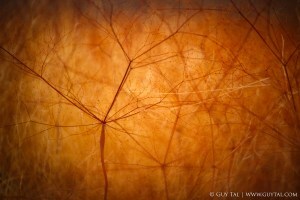Viewerly and Artistly
Announcements:
After prematurely announcing its final date a few years ago, the Moab Photography Symposium will be back in September, 2025! I will join several of my talented photo colleagues and have the privilege of delivering the closing presentation. Seating is limited, so be sure to reserve your places in both the main event and related workshops early.If you’ve missed my interview with the bubbly Colleen Miniuk about my recently published book Be Extraordinary, you may now watch the recording here.If you’ve read Be Extraordinary or any of my other books, please help me get the word out by posting a rating and/or review on Amazon (note that you may do so even if you purchased the books elsewhere).Please consider supporting this blog on Patreon. Really, it makes a difference, even at just $2/month.For those who prefer it, new posts on this blog are automatically shared to Bluesky. No, this doesn’t mean I’m “on” Bluesky in the sense that I’ll be logging in to the platform with any frequency or interacting with anyone on it. If you need to reach me, please use the contact form.~~~
Note: the article below is an edited and expanded version of a column originally published in LensWork Magazine. If you purchase any of the Amazon products linked in the text, I will earn a (very small… really, embarassingly small) commission, which I mention because Amazon requires it.
It is interesting to note that much of the experimental photography that we revere today has been done by individuals whose commitment to photography is but one aspect of their commitment to art.
—Jerry Uelsmann
In his book S/Z, philosopher and critic Roland Barthes, a proponent of experimental avant-garde art, coined the terms lisible and scriptible to describe different kinds of texts. The terms are most often translated into English respectively as readerly and writerly.
A readerly text, according to the Encyclopedia Britannica, “is one that presents a world of easily identifiable characters and events.” Such texts provide readers with obvious, unambiguous, often enjoyable meanings requiring no great effort to interpret or understand.
Writerly texts, on the other hand, aim to engage readers actively in making meaning by requiring them to decipher symbols and metaphors, resolving ambiguities, or filling in intentional gaps. In deciding the significance and meaning of writerly texts, readers are also invited to contribute meaning of their own making. In this sense, they become co-writers in addition to the original authors (hence the term “writerly”).
The reward for those who consume writerly texts—readers who are willing to invest time and effort to digest, infer, and contemplate significant meaning found in difficult, complex texts, perhaps also contribute meaning of their own where the author created opportunities for it—is a form of pleasure Barthes referred to as “jouissance” (translated as “bliss,” sometimes even as “orgasm”).
Conversely, readerly texts, which are easier and more straightforward to consume and thus may be enjoyed by a wider audience, also come with some downsides: one becomes just a passive receiver of meaning, limited to either accepting or rejecting meanings expressed entirely by someone else, having no room to enrich, contextualize, or add meaning of one’s own. Also, since some complex meanings by their nature require deeper engagement from readers to understand, readerly texts are limited by their nature to comparatively shallow, obvious, and easily inferred meanings.
A similar distinction can be made in visual art. Replacing “reader” with “viewer” and “writer” with “artist,” I will use the (made-up) terms viewerly and artistly in a similar way to Barthes’ use of “lisible” (readerly) and “scriptible” (writerly). By this characterization, a viewerly work is one whose meaning and significance are obvious and easy to infer at first glance, requiring no prolonged contemplation, active interpretation, or investment of imagination from the viewer. Artistly works, on the other hand, are—by design—ambiguous, requiring viewers to think, to interpret, to deduce, to guess, and to decide the meaning and significance of an artwork for themselves—to bring their own creativity and artistic sensibilities to the viewing experience.
Artists who create artistly images deliberately make them—at least to a degree—abstract and unobvious, so as to leave room for interested viewers to insert their own meanings, their own significances, their own aesthetic sensibilities, their own interpretations and symbolic connotations.
No doubt, demanding greater engagement from viewers will likely have the effect of limiting a work’s audience. Viewerly images whose meaning is obvious and whose aesthetic appeal is, as the saying goes, “easy on the eyes,” are more likely to gain popularity and approval from more viewers. The downside of such images is that their simplicity also makes them quick and easy to consume, limiting their complexity, depth of meaning, and expressive range, leaving at best a fleeting impression but likely not prompting viewers to prolonged contemplation. As Edgar Degas put it bluntly, “When you always make your meaning perfectly plain you end up boring people.”
It is fair for artists to ask, “what if my work is so abstract—so artistly—that some people will not understand the meaning I wished to communicate?” There are several ways to answer this question, the easiest of which is: so what? Such work, if nothing else, puts one in the good company of some of the greatest artists of the modern era whose works are ambiguous by design—offered to viewers who are willing to take the time to study these works, spend time contemplating them, perhaps even researching them, seeking to understand them and to associate subjective meaning with them. These artists have often been criticized, even dismissed and ridiculed, before their works gained the appreciation we have for them today.
Photographers, historically, have faced similar hurdles to avant-garde artists when first presenting their work as art: as works possessing meaning and significance beyond direct, mimetic—viewerly—representation. This was notably the case at Alfred Stieglitz’s pioneering gallery, 291 (originally named “Little Galleries of the Photo-Secession,” and later renamed after its address at 291 Fifth Avenue in New York City.)
At 291, Stieglitz exhibited the works of pioneering photographic artists alongside works by prominent impressionist painters and other modernist creators whose work was controversial at the time. Describing his experience at 291, Paul Strand wrote:
‘291’ was a place where a particular kind of work was being done, and it was through [Edward] Steichen, really, that modern art at that time—Cézanne, Braque, Picasso, Brancusi—came into the Photo-Secession Gallery. Stieglitz was very glad to have these things because he found that this art was being trampled on in the same way that photography was. Photography as an art was denied, ridiculed, attacked—especially by the academic painters, who thought that the camera might take their livelihood away. The acknowledgment of the validity of photography as a new material, as a new way of seeing life through a machine, was questioned and fundamentally denied. Well, here were these pictures by the Cubists, which were also looked upon as the work of idiots. I used to hear people at ‘29l’ say that some of these painters should be in a lunatic asylum, they should be punished, they shouldn’t be allowed to do these things!
Creators of writerly/artistly works have always worked at risk of being misunderstood, unappreciated, even shunned by the mainstream art scenes of their day. Novel, pioneering work in any art medium understandably upsets those who are accustomed to or invested in the zeitgeist of their day. In his book, The Dehumanization of Art, philosopher José Ortega y Gasset explained:
New art obviously addresses itself not to everybody . . . but to a specially gifted minority. Hence the indignation it arouses in the masses. When a man dislikes a work of art, but understands it, he feels superior to it; and there is no reason for indignation. But when his dislike is due to his failure to understand, he feels vaguely humiliated and this rankling sense of inferiority must be counterbalanced by indignant self-assertion.
Likewise, critic E.H. Gombrich, in his book Art and Illusion, wrote:
The artist gives the beholder increasingly “more to do”, he draws him into the magic circle of creation and allows him to experience something of the thrill of “making” which had once been the privilege of the artist.
Henri Matisse proclaimed, “Creativity takes courage.” Indeed, original artists—those who dared to introduce new ideas, new styles, and new aesthetics in their work—often had to rely on grit and courage to persist despite disapproval, criticism, even mockery. Still, without these artists it is likely that art would not have progressed much beyond the simplistic iconography of the Middle Ages. The rewards for these artists for enduring such hardships did not always come in the forms of popularity or financial success. At times, their only reward was their joy in doing their work, their pride and faith in their convictions, their engagement in creative work for its own sake, their belief in themselves.
These pioneering artists who sought to advance art by engaging viewers in more complex and meaningful ways than as just passive consumers of benign aesthetics, deserve our gratitude for the diversity and richness of art available to us today. As creators who care about the continued evolution of art—especially the art of photography, which has remained largely stagnant, stuck in “straight” aesthetics and simplistic, romanticized views for the better part of the last century—it is important that we, too, find the courage make our own contributions: dare to go beyond the templates, beyond what’s safe and acceptable, beyond the zeitgeist.
We must find the courage to create and to experience expressive—artistly—art, and not just limit ourselves to simplistic—viewerly—representation. Or, if such works are of no interest to a given artist, at the least we must be willing to accept, to respect, and to try to understand works created by pioneering photographic artists of our generations who are willing to push the proverbial envelope, whether or not their work complies with our own sensibilities, expectations, and preconceptions.




